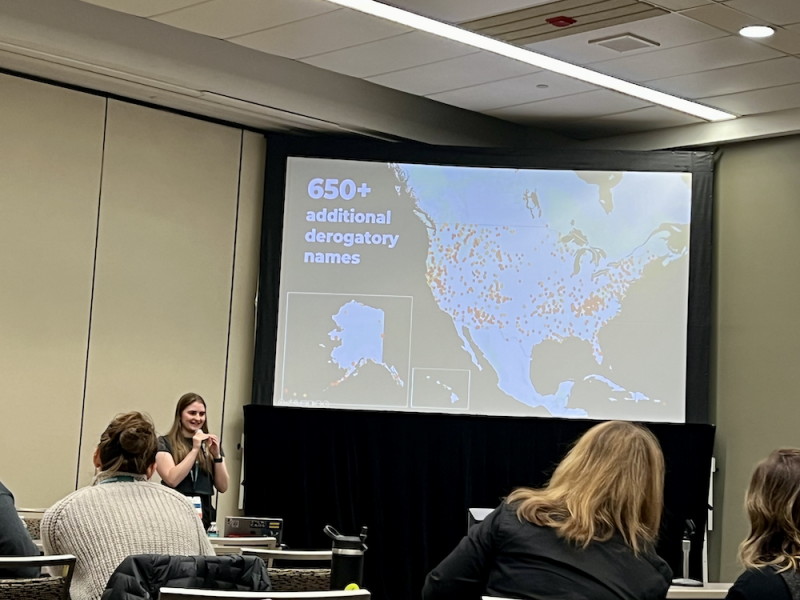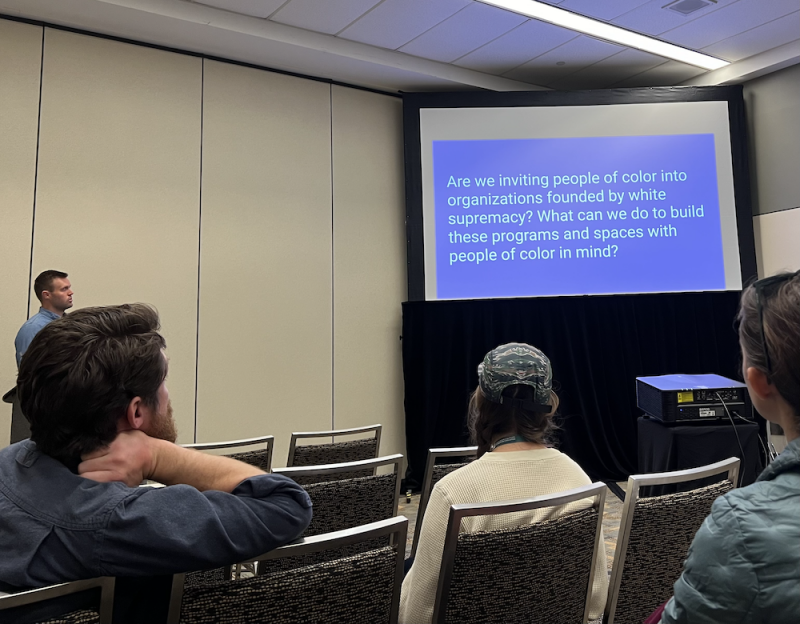Transformative Leadership in the Outdoors
AHS NextGen Trail Leader, Tamika Graham, attended the AORE Conference, and shares her thoughts on the experience and key takeaways.

Recently, I had the opportunity to attend a conference as part of professional development activities to support my advocacy efforts. Held in Baltimore, Maryland this year, the Association of Outdoor Recreation and Education (AORE) Professional Conference offered educational opportunities regarding key issues in outdoor recreation, advocacy, and public policy.
Broadly, the conference focused on current trends in the outdoor industry and emphasized equity in the outdoors. A few key sessions focused on effective leadership, honoring places through re-naming, and modernized outdoor programming. Some of my key takeaways from the conference include the following:

Transformative Leadership
I appreciated the reminder that tackling complicated problems and developing effective solutions still requires effective leadership. What I found useful is a leadership model presented that prioritizes the greater good over self, and underscores the value of listening, building trust, and demonstrating care and commitment that leads to impact. Transformative leadership is not solely accomplished through directives but can be effective by gaining perspective from others and asking powerful questions to prompt open dialogue.
The why behind transformative leadership in the outdoors reminded me of a popular proverb – “without a vision, the people perish”. Our leaders help us to maintain the vision at the forefront, which must include cultivating a thriving outdoor community where everyone feels invited and belongs and has equitable access to what they need.

Naming Conventions
The Wilderness Society (TWS) delivered compelling arguments for why place names matter. Let’s look at Yosemite National Park, for example. In 1909, it became the country’s first designated national park and has a name reflecting the indigenous language that unfortunately translates into the harm inflicted upon the indigenous inhabitants.
Derogatory and racist names, whether covert or overt, break our connection with the land. Whereas names for public lands, parks, and trails should represent access and should reflect an honest and inclusive history.
But how do we do this? Together, consciously, and with cultural awareness and respect. And from a technical standpoint, through the appropriate legislative channels at local, state, and federal levels.
But why do we still see roadblocks in this effort? As TWS explained from a historical perspective, the Secretary of the Department of the Interior (DOI) made a sweeping change in the 1960s to eliminate certain derogatory words in public lands. Yet, today we are still critically analyzing a collection of maps with nearly 900 push pins spread far and wide that represent public places waiting to be restored and dignified through a proper re-naming.
The big takeaway is that we need more people at the table with a sober awareness of how indigenous lands became designated wilderness or parks and are advocates for more inclusive place names in public lands.
Today, a new initiative is underway through the Coalition for Outdoor Re-naming and Education (CORE). This initiative seeks to provide a bridge between a Re-naming Advisory Committee within the DOI and the local communities to ensure that the new names represent the culture and values of the community.
This work is distinctive from other initiatives that focus on reevaluating eponyms in public lands. Partners in this effort include organizations such as the American Hiking Society, the Sierra Club, the Appalachian Trail Conservancy, and other groups and advocates.

Cultural Relevance
Culture is in us and all around us. We hold, witness, experience, and learn from various forms of cultures. It shapes our thoughts, beliefs, actions, sense of self, and much more. Yet presently, the mainstream outdoor community still often struggles to connect with non-traditional cultures.
Data from the 2022 Outdoor Participation Trends Report was presented that illustrates that the outdoor industry is strong and growing, yet there is still a disconnect when it comes to diversity among participants in the outdoors. This is a critical data point for the industry because people experience the outdoors in different ways. For some, the outdoors is about a sense of adventure and freedom. For others, a deep connection with nature is intrinsically tied to wellness and spirituality.
A lack of cultural awareness in programming can lead to the outdoor industry and organizations serving those who are privileged and part of the mainstream and missing the needs of those with historically disadvantaged and marginalized identities in the outdoors. This bridge between participation and cultural relevance is not a new connection, but the recent data points indicate that there is still work to be done to reach those who are far less likely to engage in the outdoors due to long-standing structural and institutional barriers.
Overall, we have to create and implement strategies that can support and improve everyone’s sense of belonging in nature. AORE brought forth a conference that was a call to action and put the outdoor community’s most perplexing and relevant challenges front and center – not to be casually observed from afar, but to be touched, and collectively tackled with urgency and vigor.
Written by Tamika Graham
